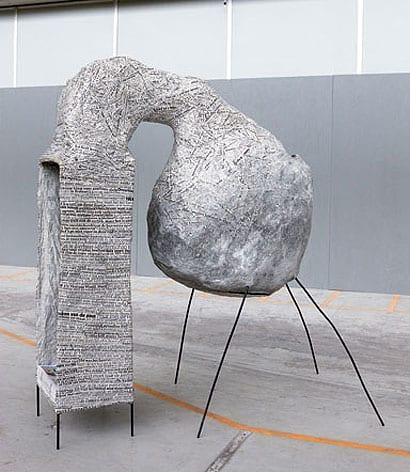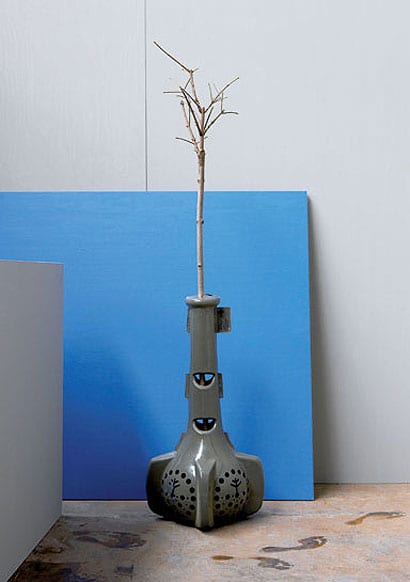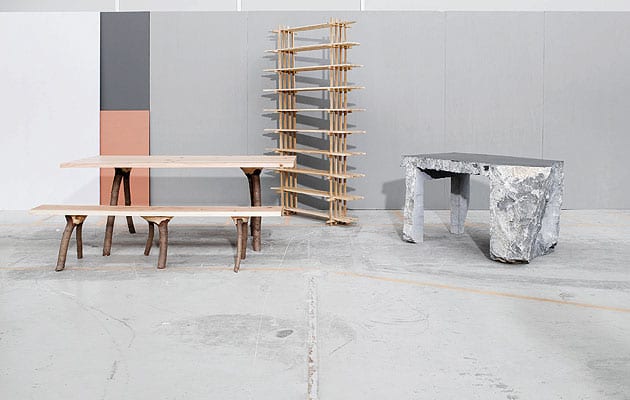|
Design Academy Eindhoven opened its graduation exhibition amid confusion over the resignation of its director Alexander van Slobbe after only nine months on the job. He wasn’t at the opening, although his predecessor, Li Edelkoort, was (plugging her own Dutch Design Week event, Talent 2009, across town). She waxed lyrical about the creativity unleashed by the recession. At the academy’s show, the work largely dealt with the aesthetics of waste, sustainability and design for tight spaces, reflecting the new mood. It said a lot that the show prize went to a plant pot.
Hoog en Droog, Jephte Francissen (above image)
The beautiful simplicity of these wooden crates, created by leftovers from a furniture maker, is the perfect example of the understatement that this year’s graduates were capable of. It functions as a space-saving overhead storage device. Each of the crates is suspended from the ceiling by slender ropes that attach to the bottom of the drawer through a clock spring. This means that when you hoist the crate up it runs easily and when you ease the pressure it locks into place.
Oudsnieuws, Florian de Visser
Florian de Visser’s papier mâché container combines a display and rubbish bin for free newspapers. It’s clearly inspired by Nacho Carbonell’s bulbous organic shapes, even though Carbonell’s output has never been quite so practical. It looks a bit like an insatiable newspaper-munching monster.

image: Astrid Zuidema
Wastesthetics, Laura Lynn Jansen
Laura Lynn Jansen has taken the bin bag out of its container and exposed it as an acceptable household object. She has even taken into account how it will look when it’s full of rubbish. By producing the waste sack from a pearl-coloured stretchy plastic, the bag takes on a curious shape decided by the objects contained within. Jansen hopes that the bag and its shape will also lead to reflection on how much garbage we produce.

image: Astrid Zuidema
Bioplastic planter, Bas van der Veer
This planter, made from biodegradable plastic, is developed to make the transportation, planting and maintenance of saplings easier. When the tree is planted, the shaft of the planter protects its slender trunk. As the tree’s roots grow the plastic degrades, decomposing into nutrients. This, and his clever rainwater-saving device A Drop of Water, won him the René Smeets award, the academy’s most prestigious accolade.

image: Astrid Zuidema
Inflatable Void, Yoeri Treffers
This polythene tent has been designed to provide an escape from stimulation overload. When not in use it hangs from the ceiling as an empty sack, and when it’s needed it can be inflated by an electric fan in just 20 seconds. It measures three cubic metres and its shape is influenced by the objects surrounding it.

image: René van der Hulst
Fragments of Nature, Lex Pott
Lex Pott’s table and bench plays with the evolution of raw wood from tree trunk to plank. The legs of these pieces are wood at its rawest stage – stumps that hold up the machine-made table top and seat. Pott intends for the pieces to go into production yet keep the individuality of something that has been hand crafted.
|

























